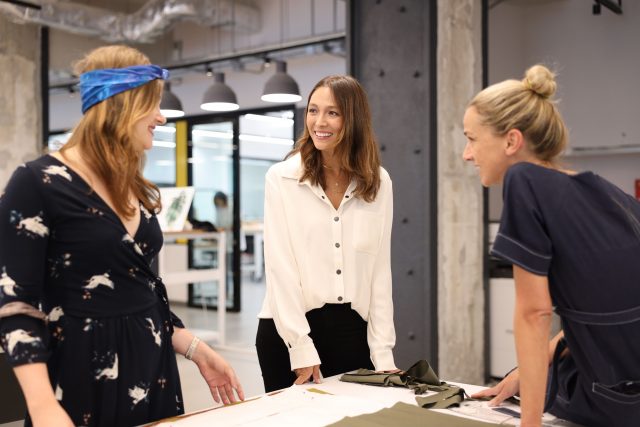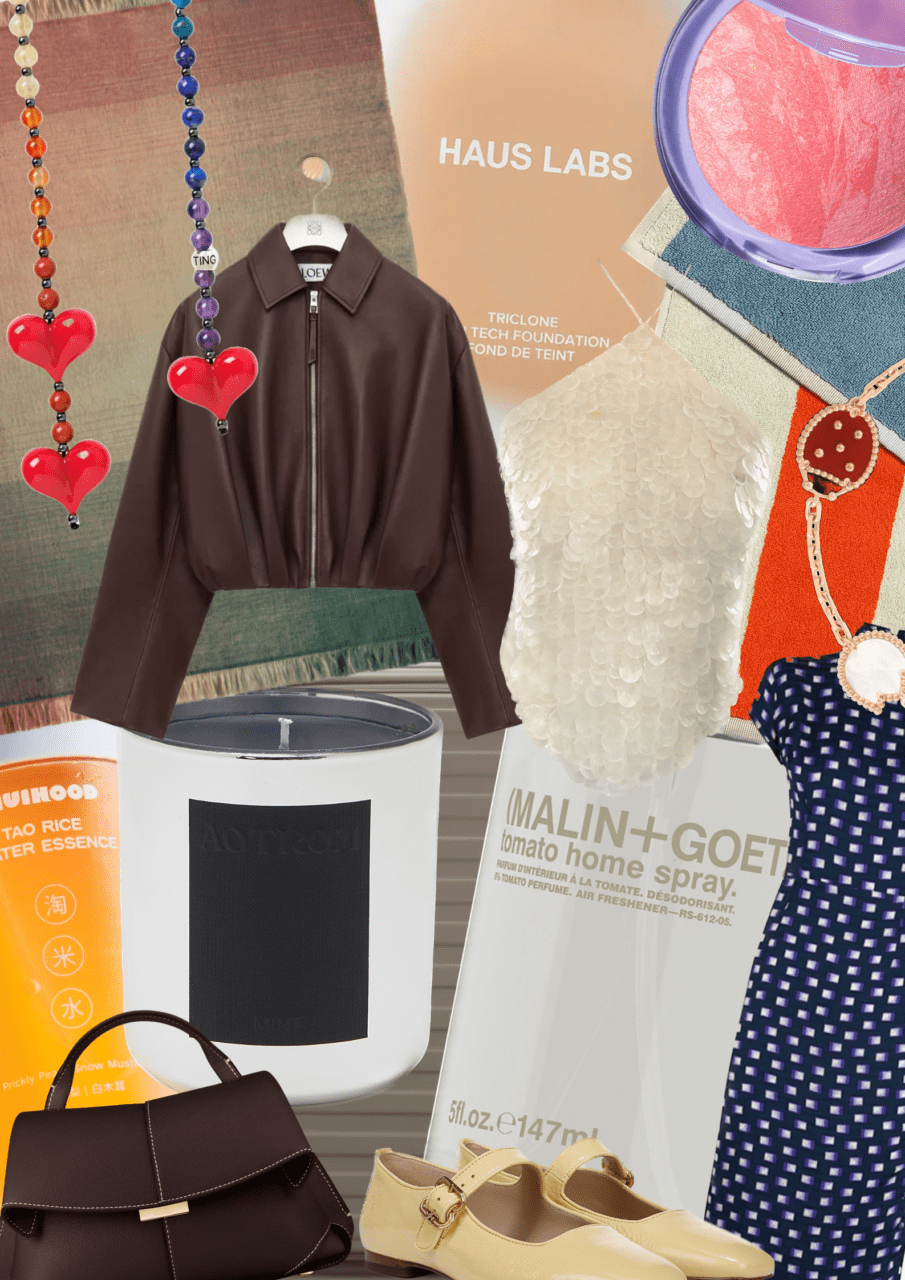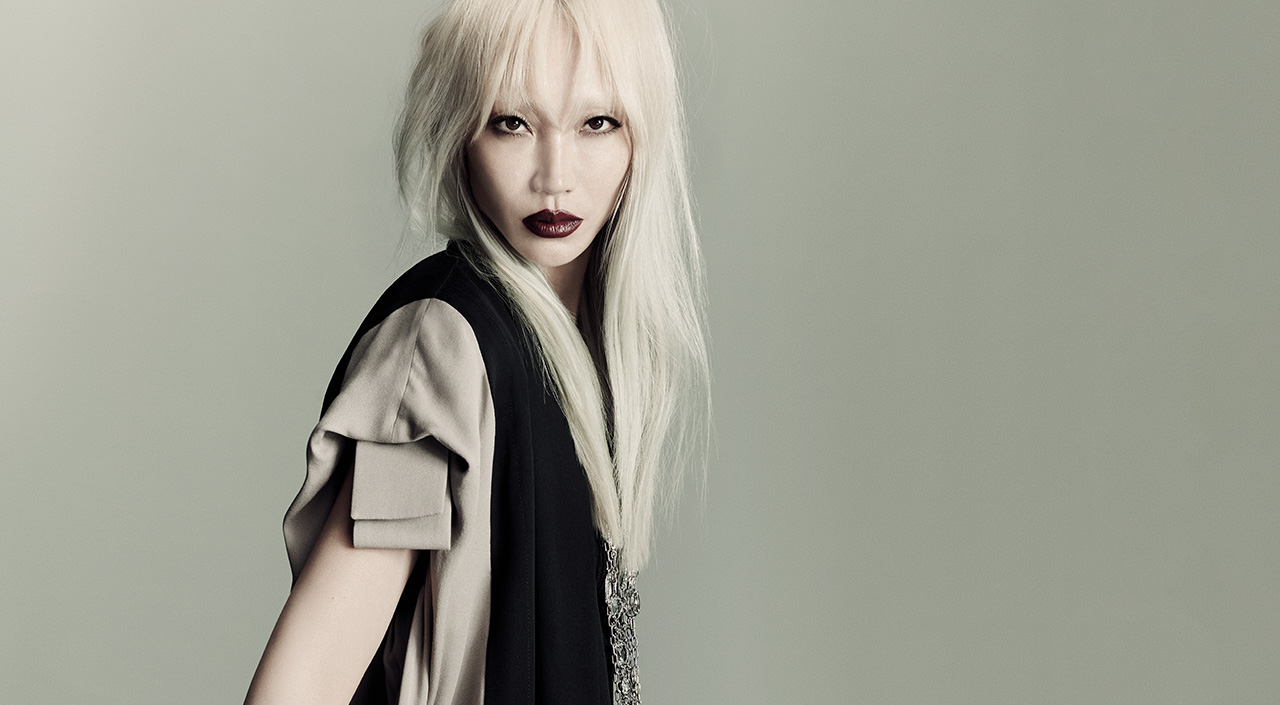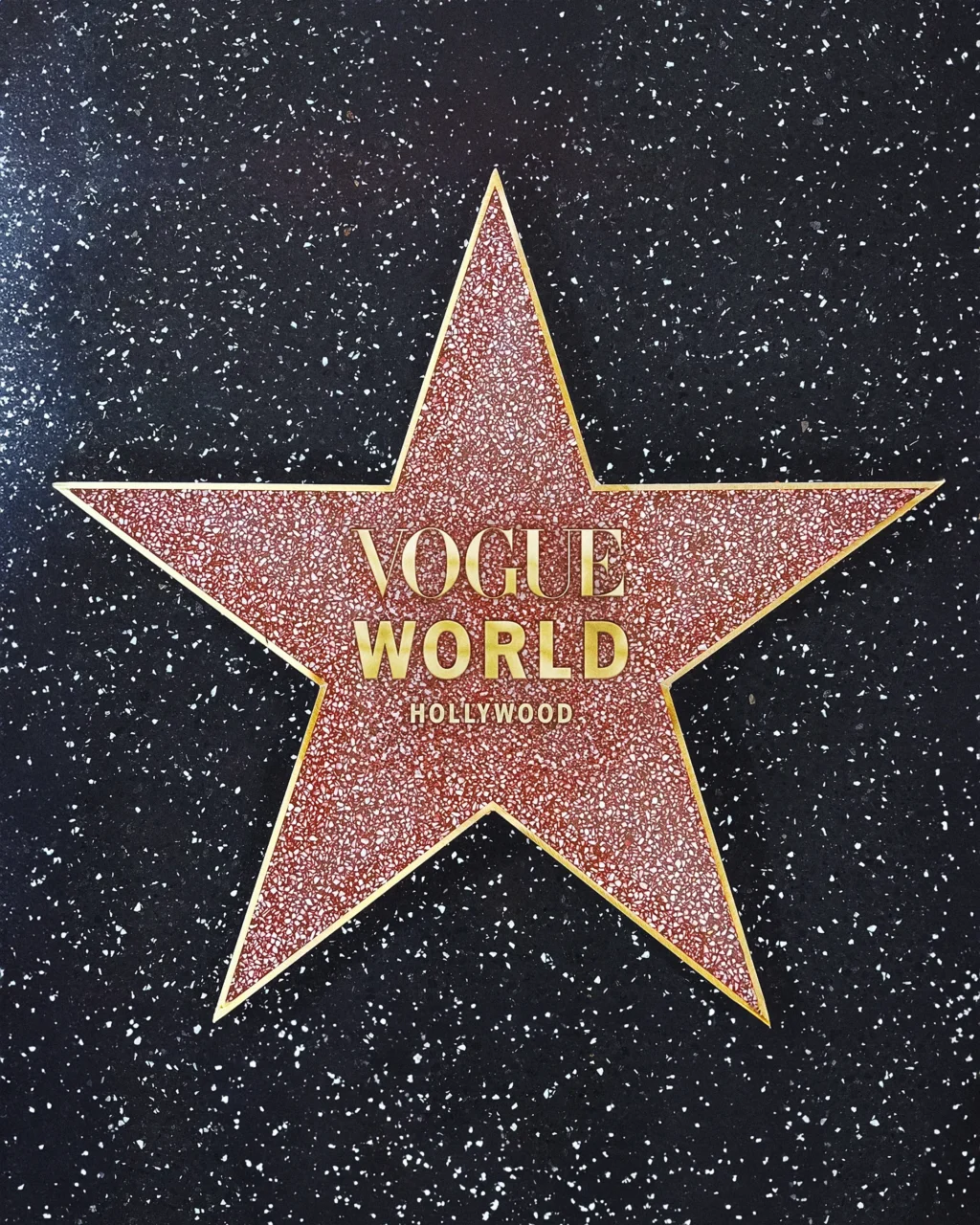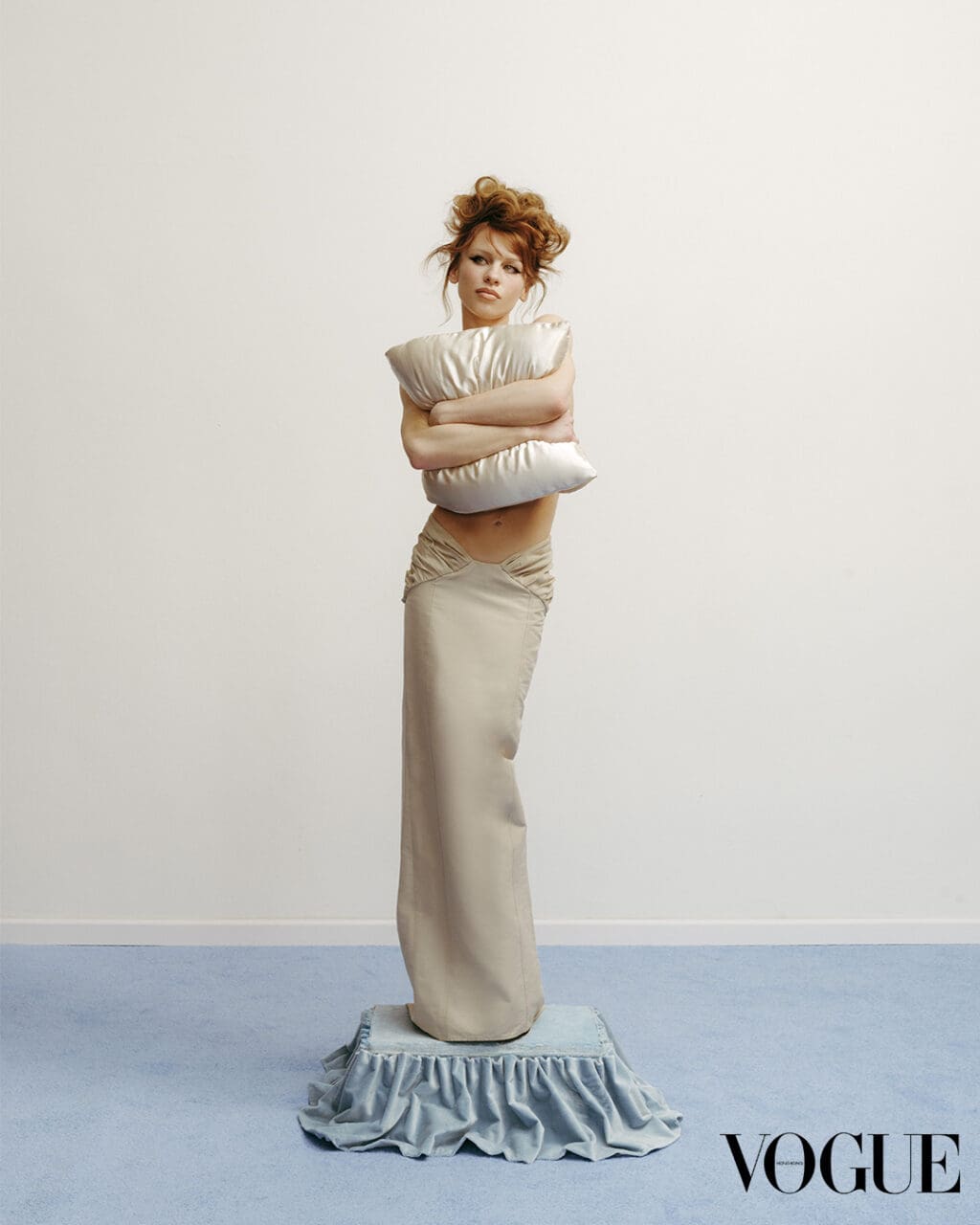At the start of the pandemic, the fashion industry was awash with conversations about how it could have a more positive impact on the planet — with an open letter led by Dries Van Noten calling for a “reset” and sweeping changes made to the fashion week calendar. While promising strides, including the appointment of eco-minded Gabriela Hearst as creative director of Chloé, the sustainability conversation has quietened this fashion month, despite the need to take urgent action on the climate crisis.
Luckily, a new generation of brands are promoting more eco-friendly and ethical practices, including Collina Strada, Chopova Lowena, Rave Review and Ahluwalia — who was recently awarded the Queen Elizabeth II Award for British Design for her commitment to sustainable practices and design excellence.
The trend is continuing, too, among emerging designers and recent graduates, who are offering a glimpse of what a more planet-friendly fashion industry might look like. Here, we speak to three rising designers who are championing sustainability this season and beyond.
Since graduating from Central Saint Martins in 2017, British-Nigerian designer Tolu Coker, 27, has become known for her upcycled designs, which have been worn by Rihanna and Demi Lovato. This season, Coker showed her menswear and womenswear collection via a film entitled Soro Soke: Diaspora ’68’ — ‘soro soke’ means ‘speak up’ in Yoruba.
What was the inspiration behind this collection?
“I was looking at what’s been going on around the world. For me, the thing that really struck home when the #EndSARS and Black Lives Matter protests were happening was that this isn’t a new conversation. It made me reminisce about some of the discussions I used to have with my dad, and [think about] what was happening in the 1960s and 1970s in Nigeria and here in [London], in the diaspora. I looked at real people’s stories — photo albums and mainly my dad’s archives.”
Can you tell us about some of your sustainable practices?
“Sustainability is really inherent in what I do; it’s part of the core practice of how I create. I’ve been working with a Spanish factory that has been developing this incredible dry indigo denim because it significantly reduces the water used in the dyeing process. There’s upcycled shells and offcuts, and a lot of the styling pieces were from literally broken things, such as old buckles.
“Often the conversation is focused around materials, but there’s also the idea of sustainability and culture. When we’re creating things and we’re talking about craft, are we valuing the people behind the process; are we valuing the different cultures that exist? Sustainability and the ability for people to live and be paid fairly for their work is really integral to how I create.”
What’s next for you and your brand?
“I want my brand to be more of a community. A lot of the projects that I’m focusing on now are about working with communities and collaborative approaches because it’s a more beautiful and enriching way of working. We learn, develop and grow so much [by working with] one another.”
Romanian designer Alexandra Sipa, 23, first developed her trademark technique of turning discarded electrical wires into lace while researching a sustainability project at Central Saint Martins. After graduating during the pandemic in 2020, her attention is now on growing her brand in a sustainable manner, beginning with her AW21 collection Sour Floral.
What was your starting point for this collection?
“It started organically, piece by piece, from my last graduate collection. Because I graduated during the pandemic, I wasn’t able to do everything I wanted. I had all of these ideas that I wasn’t able to complete, so then I put everything into this collection. I wanted to create more wearable options — that’s why I made all of the microtops that are sustainably printed.”
You use a lot of discarded electrical wires in your designs — how has this practice developed since your graduate collection?
“Throughout the summer and autumn, I’ve been experimenting with how to make the different lace pieces more wearable. I started with the bras and the bodysuits, combining lace with different fabrics. In this next collection, one of the main pieces is the denim wire-lace jacket that imitates the look of shredded denim. I used to source wires from a recycling plant in London, but because of lockdown, I’m now sourcing from different people on Facebook Marketplace that have surplus.”
What influence has the pandemic had on your creative processes?
“When everything closed in March 2020 and we had to work from home, it showed me the resilience of the craft and artisanal process in the face of all this. I didn’t really need anything to continue creating my collection — I could easily make it at home with materials that I’d already gathered. I didn’t need any machinery; it was just lace that I made with my hands. I enjoyed it a lot more because I could do it at my own pace; it was much slower.”
London and Liverpool-based brand SS Daley first landed on our radar thanks to a certain Harry Styles, who wore the 24-year-old designer’s white shirt and pleated trousers in his video for Golden in October. Upcycling is an inherent part of Steven Stokey-Daley’s work, as seen in his latest collection, which was styled by Styles’ (and The Crown’s Emma Corrin’s) stylist Harry Lambert.
What was on your moodboard for AW21?
“My inspiration is public school culture in Britain and posh gay boys, really reflecting on films and TV series such as Brideshead Revisited (1981), Another Country (1984) and Maurice (1987). This collection is an extension of my first one — it feels like the second act. It’s about ‘How would that boy be doing in lockdown?’ I think a lot of people are craving to dress up and go out, and maybe explore the eccentricity that has been lost over the past few years.”
How do you approach sustainability in your work?
“Working in lockdown gave me the time to consider the materials and resources I had. You can see the upcycled tablecloths I’ve been doing and I was lucky enough to have [deadstock] fabric from Alexander McQueen again — they supported me for my first collection. Also similarly with Katie Hillier — she’s offered me her remnants and deadstock to create some one-of-a-kind pieces.
“I also wanted to explore local industries in the UK. I got talking to two different mills and wanted to learn about their processes. Every piece in the collection is made from natural UK-sourced materials.”
You’ve already had support from Harry Styles — what’s it been like to have someone so popular championing your designs?
“It’s career-changing. The weight of celebrity means a lot, combined with the important role social media plays. [Styles] has provided me with a platform — it’s massive that he and Harry Lambert have thrown their weight behind me. How great that someone who works sustainably can now have that platform and push forward.”
Editor
Emily ChanCredit
Lead image: Ade Coker










